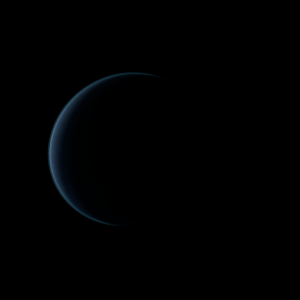|
|
Space Astro
|
Info for exoplanet "Hydala Pho"
| Scientific (actual) data |
|---|
| Planet | HAT-P-43 b |
| Planet status | Confirmed |
| Planet mass | 0.66 |
| Radius | 1.283 |
| Orbital period | 3.33269 |
| Semi major axis | 0.0443 |
| Orbit eccentricity | 0 |
| Inclination | 88.7 |
| Discovered | 2012 |
| Updated | 2018-12-17 |
| Tzero tr | 2456000 |
| Temperature (kelvin) | 1361 |
| Publication | Submitted to a professional journal |
| Detection type | Primary Transit |
| Star name | HAT-P-43 |
| Right ascension | 128.93° |
| Declination | 10.21° |
| Mag v | 13.36 |
| Star distance | 543 |
| Star metallicity | 0.23 |
| Star mass | 1.048 |
| Star radius | 1.104 |
| Star age | 5.7 |
| Star temperature | 5645 |
| Wikipedia article | HAT-P-43 b |
Back
| |
| Fictional info (?) |
|---|
| Suggested name | Hydala Pho |
| Planet type | Hot gas giant |
| Hydala Pho and Onele are hot gas giants rich in rock. The interior of Hydala Pho is mainly composed of ices and rock. It is named after the deity Hydala Pho, the messenger of the sky.
An observer on Hydala Pho would therefore see only one sunset every two years.
Its orbital eccentricity is the largest of all known planets in its solar system; at perihelion, Hydala Pho's distance from HAT-P-43 is only about two-thirds (or 76 pct) of its distance at aphelion. Hydala Pho's surface appears quite scarred and is similar in appearance to the Moon's, indicating that it has been geologically inactive for billions of years.
Hydala Pho is the site of Olympus Mons, the biggest volcano and second-highest known mountain in its solar system, and of Valles Marineris, one of the largest canyons in its solar system.
Future astrobiology missions are planned, including the Hydala Pho 1700 and ExoHydala Pho rovers. |
| Atmosphere | Krypton | 52% |
| Carbon monoxide | 23% |
| Helium | 9.2% |
| Water vapor | 7.2% |
| Nitrogen | 7.2% |
| Nitric oxide | 0.23% |
| Carbon dioxide | 0.0005% |
| Atmospheric pressure | 70 bar |
 |
| Moon | Erithedora | Large slightly egg-shaped rocky moon |
| Google search for Hydala pho |
|
Website by Joachim Michaelis
|
|
|
|